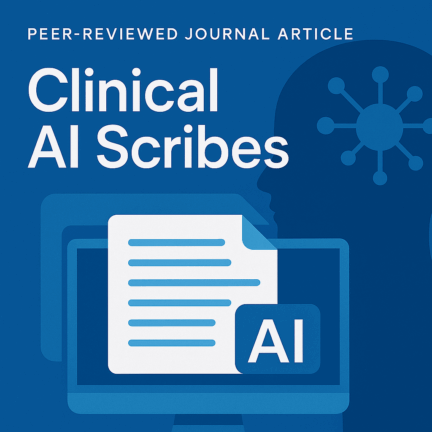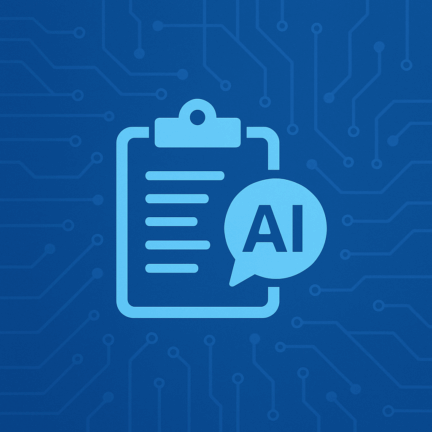
The Emergence of AI Scribes in Healthcare
AI scribes utilise advanced speech recognition and natural language processing to transcribe and summarize patient-clinician conversations in real time. This innovation addresses a significant challenge in healthcare: the administrative burden of documentation. Clinicians often spend substantial time on note-taking, which can detract from patient engagement and contribute to burnout.
Recent studies indicate a growing adoption of AI in clinical settings. For instance, a study by Blease et al (2024) found that 20% of UK general practitioners have integrated AI into their practice, highlighting a shift towards embracing technological solutions to improve efficiency and patient care https://doi.org/10.1136/bmjhci-2024-101102.
Benefits of AI Scribes
Enhanced Patient Engagement: By automating note-taking, clinicians can maintain eye contact and actively listen to patients, fostering a more empathetic and effective consultation.
Improved Documentation Accuracy: AI scribes can reduce errors associated with manual documentation, ensuring that patient records are comprehensive and precise.
Reduced Administrative Burden: Automating the documentation process allows clinicians to allocate more time to direct patient care, potentially improving job satisfaction and reducing burnout.
Streamlined Workflow: Integrating AI scribes into electronic health record systems can enhance workflow efficiency, allowing for quicker access to patient information and facilitating better-informed clinical decisions.
Challenges and Considerations
While the advantages are compelling, the integration of AI scribes into healthcare systems is not without challenges:
Data Privacy and Security: Ensuring patient confidentiality and compliance with data protection regulations is paramount when implementing AI technologies.
Accuracy and Reliability: AI scribes must be rigorously tested to ensure they accurately capture and interpret clinical conversations, minimising the risk of errors in patient records.
Integration with Existing Systems: Seamless integration with current electronic health record systems is essential to avoid workflow disruptions.
Clinician Training and Acceptance: Providing adequate training and demonstrating the value of AI scribes are crucial for clinician buy-in and effective utilisation.
Looking Ahead
The integration of AI scribes into clinical practice represents a significant step towards modernising healthcare delivery. By alleviating administrative burdens and allowing clinicians to focus more on patient interaction, these technologies have the potential to improve both patient and provider experiences.
However, careful consideration of the associated challenges is essential to ensure that the implementation of AI scribes is both effective and ethically sound. Through the efforts of organisations like CoDE, the healthcare industry can navigate these complexities and harness the full potential of AI to enhance patient care.
Making Sense
The Centre of Digital Excellence (CoDE) is at the forefront of exploring and understanding the impact of AI scribes in clinical settings. As a collaborative platform, CoDE brings together healthcare professionals, technologists, and researchers to evaluate the efficacy, safety, and ethical implications of integrating AI into patient care.
Through pilot programs, educational initiatives, and policy development, CoDE aims to ensure that the adoption of AI scribes enhances patient outcomes and aligns with the overarching goal of delivering high-quality, patient-centred care.










